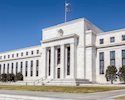The cheap oil prices and the fierce battle among the oil producers have led to a 6th week of contraction in US’ oil production as we approach the FOMC’s March meeting. The slowing global economy, the inability to generate inflation in major developed economies, the volatility in the financial markets and the highly tense investors could have started to impact the US growth dynamics, where the momentum in wages growth had just picked up to an enthusiastic level. This enthusiasm had accompanied the Fed in its first step to the policy normalisation on December 2015.
The fact is that the US labour market improved significantly. The unemployment rate steadily decreased from 10% end-2009 to 4.9% in January and the US economy absorbed 222’000 jobs on average over the past twelve months. These are good news; nevertheless investors are increasingly willing to see a better performance in terms of the quality of jobs added rather than the quantity only. Besides the nonfarm payrolls and the unemployment rate, the improvement in wages and the participation rate should be closely watched because the pay is undoubtedly a major indicator of inflation and inflation expectations. The earnings are expected to have grown by 0.2% on month, slower than 0.5% recorded on January.
When the Fed decided to kick-off with the monetary policy normalisation on December 2015, the market anticipated an additional 1% rise in Federal funds rate to follow through 2016. This scenario implied that the second Fed hike would happen by March 2016.
Unfortunately, the New Year did not bring joy and happiness to the market, at least not so far. The slowdown in China, sharp sell-off in equities, cheaper oil and commodity prices, depressed and compressed investor sentiment and the political vows before the US presidential elections are now piling up. As a result, the market gives less than 10% probability for a March rate hike.
A read above 150’000 could temper concerns that the global slowdown may be spilling over the US jobs market and improve the Fed expectations for the year. While we do not believe that a rate hike is on the table for the March FOMC meeting, a read exceeding the 200’000 psychological mark could well bring some Fed hawks back to the market and bring the market to price in a one or two rate hikes before the end of this year, if the earnings growth has at least been in line with 0.2%m/m expected.
A soft read will certainly further develop the fear that the Fed will not be at a position to carry on with the normalisation. In this case, the December hike will be increasingly considered as a‘one-and-done’ scenario. The US yield curve will then be susceptible for further flattening pressuring the dollar downwards.
This report has been prepared by Swissquote Bank Ltd and is solely been published for informational purposes and is not to be construed as a solicitation or an offer to buy or sell any currency or any other financial instrument. Views expressed in this report may be subject to change without prior notice and may differ or be contrary to opinions expressed by Swissquote Bank Ltd personnel at any given time. Swissquote Bank Ltd is under no obligation to update or keep current the information herein, the report should not be regarded by recipients as a substitute for the exercise of their own judgment.
Recommended Content
Editors’ Picks
Fed statement language and QT strategy could drive USD action – LIVE

The US Federal Reserve is set to leave the policy rate unchanged after April 30 - May 1 policy meeting. Possible changes to the statement language and quantitative tightening strategy could impact the USD's valuation.
EUR/USD stays below 1.0700 as focus shifts to Fed policy decisions

EUR/USD stays in its daily range below 1.0700 following the mixed macroeconomic data releases from the US. Private sector rose more than expected in April, while the ISM Manufacturing PMI fell below 50. Fed will announce monetary policy decisions next.
GBP/USD holds steady below 1.2500 ahead of Fed

GBP/USD is off the lows but stays flatlined below 1.2500 on Wednesday. The US Dollar stays resilient against its rivals despite mixed data releases and doesn't allow the pair to stage a rebound ahead of the Fed's policy decisions.
Gold rebounds above $2,300 after US data, eyes on Fed policy decision

Gold gained traction and recovered above $2,300 in the American session on Wednesday. The benchmark 10-year US Treasury bond yield turned negative on the day after US data, helping XAU/USD push higher ahead of Fed policy announcements.
A new stage of Bitcoin's decline

Bitcoin's closing price on Tuesday became the lowest since late February, confirming the downward trend and falling under March and April support and the psychologically important round level.